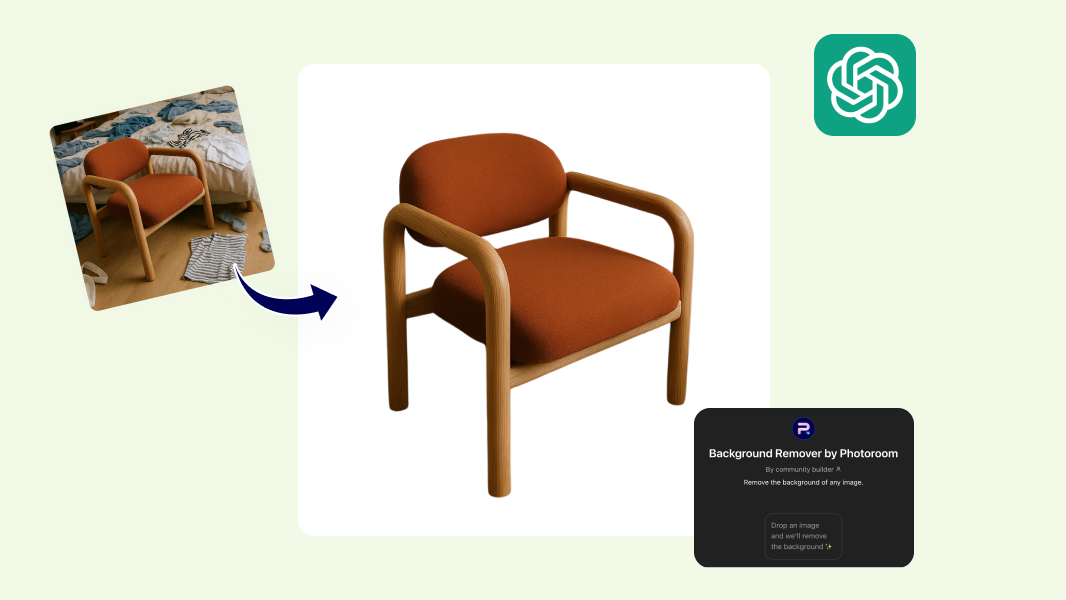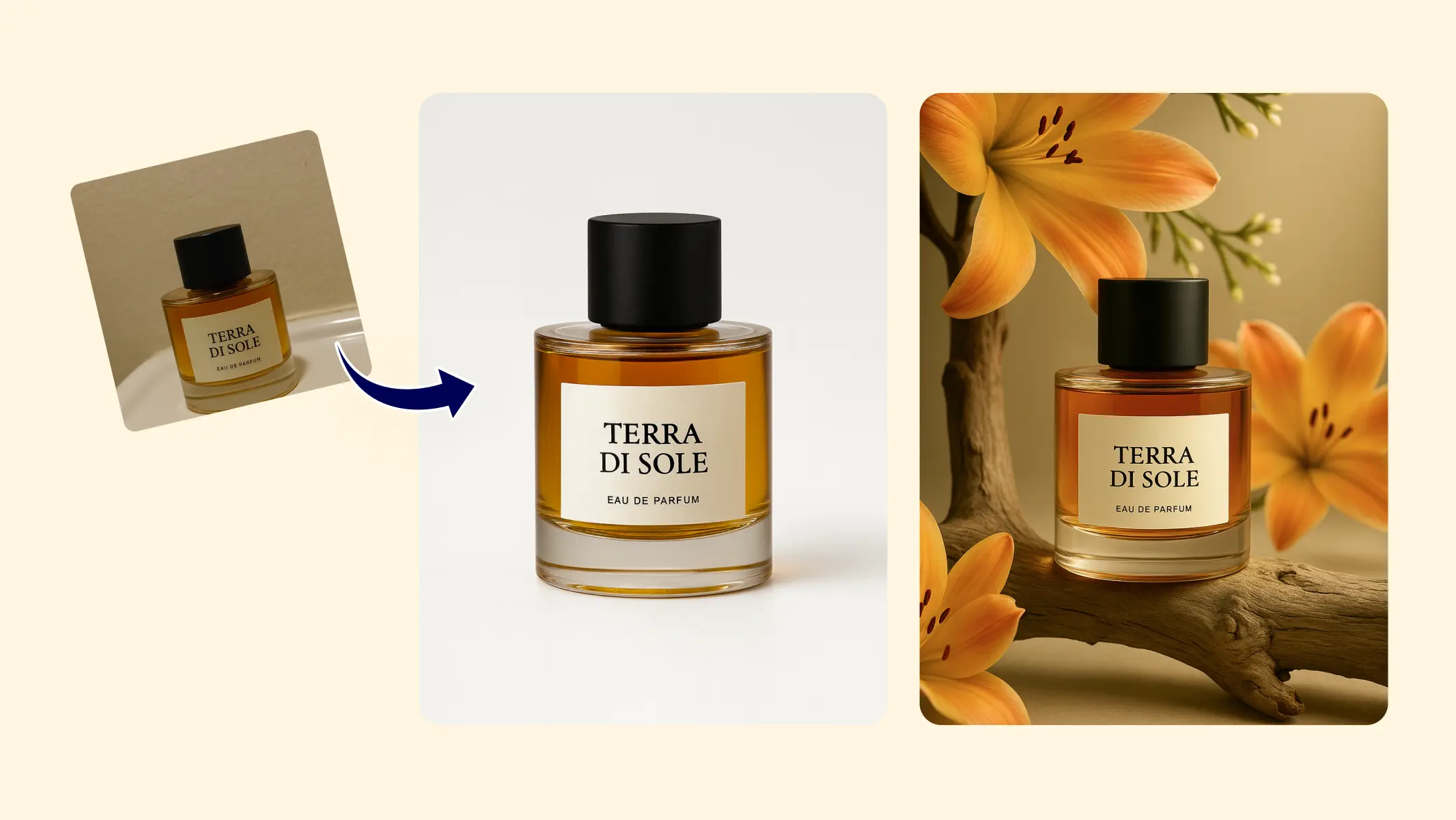How images impact conversion rates on marketplaces
In the competitive world of online marketplaces, the equation is simple: high quality images = more sales. Baymard’s large-scale usability tests underline this fact; 56% of users immediately explored product images after reaching a product details page. Your product visuals are the first and most crucial connection between you and potential buyers. In a matter of seconds, an image can captivate, inform, and persuade—making it an important element in your customer conversion journey.
Marketplaces universally face challenges of enhancing conversion rates, increasing seller or reseller sales, and reducing returns. Addressing these issues demands a focused approach, particularly in how products are visually represented in an e-commerce marketplace. High-quality images act as catalysts—capturing attention, instilling trust, and empowering buyers to make confident purchase decisions. This is where tools like AI photo editing, powered by Generative AI, come in to transform ordinary images into compelling visual stories while saving you from manual and time-consuming processes.
By the end of this article, you’ll understand how high-quality images directly impact your conversions. Armed with this knowledge, you'll be able to explore AI photo editing, learning to transform your images into powerful conversion tools. These insights aren't just theoretical; they're a practical guide that will empower you to rise above marketplace challenges while captivating your audience.
Offering a variety of product images helps shoppers buy more
Providing a diverse array of product images has become instrumental in driving sales on e-commerce platforms. eMarketer reports that 60% of US digital shoppers insist on seeing at least three or four images before making a purchase, with an additional 13% requiring five or more. Etsy’s buyer surveys underscore the significance of image quality, with 90% of shoppers deeming it "extremely important" or "very important" in their decision-making process.
For e-commerce marketplaces, these numbers translate into a crucial strategy: showcasing products in various settings and contexts. This is where AI can help. By using AI photo editing tools, this process can be streamlined and automated at scale. The variety that generative AI photo editing tools offer helps capture the attention of shoppers, and it can help potential buyers visualize products in their lives, making them more inclined to click buy on their shopping cart.

Wendy Wang, owner of F&J Outdoors, used standard product images when she first launched her business, a store that sells outdoor patio furniture covers.”These images were helpful, but not compelling,” Wendy said. “I noticed that these images weren't delivering the desired engagement or conversion rates.”
Keen on improving these metrics, Wendy knew she had to invest in a revamp of her product images. “We didn't stop at just using high-resolution images,” Wendy shared. “We aimed to provide a comprehensive visual experience. This included multiple-angled shots, images showcasing the product in context (i.e., outdoor furniture covers placed on furniture, giving potential customers an approximation of the final look), and close-up detailed images, displaying product features and material quality.”

Wendy decided to test her assumptions with the launch of F&J Outdoor’s 2023 Edition Patio Round cover. They noticed a “30% increase in its sales” after updating the product’s listing with high-quality, detailed images.
Great product images quickly capture a shopper’s attention
The attention spans of online audiences are notoriously fleeting. Nielsen Norman Group's research reveals that users often decide to stay on a webpage in 10-20 seconds. This is where the power of impactful product images comes into play; clear, visually appealing images can communicate a product’s value proposition almost instantly. Research by HubSpot also underscores this point: articles with relevant product images get 94% more views than those without.
In the context of online marketplaces, a compelling image can be the difference between a click-through and a scroll-away. When users are presented with eye-catching product images, they’re more likely to click through to explore further—click-through behaviour that translates directly to increased conversion rates. As online shoppers are bombarded with choices, a visually engaging image can make a product stand out amid the digital noise.
Studies show that optimized product images significantly boost conversion rates. If you're selling on Amazon, try removing backgrounds with Photoroom to create professional, high-converting visuals.

Daria Udalova, founder of design agency for luxury brands Brand Da, recalls working for a high-end fashion brand with great products, but with product images that weren’t “turning any heads.” The images were dimly lit, Daria said, “and missing a wow factor.”
“We decided to give them a makeover. Making them brighter, clearer, more visually consistent. Just a few months after sprucing things up, their conversions surged by a whopping 45%.”
Daria’s theory is that high quality images take away the biggest doubt that comes with shopping online: Will it really look like this?
Low-quality product images contribute to high bounce rates and lower conversions

For e-commerce, every second matters. Slow-loading or low-quality images can severely impact user experience, leading to high bounce rates and, consequently, lower conversions. An analysis by Neil Patel's analysis showed that only a 1-second delay in page loading can result in millions of dollars in lost sales annually. Google’s research reinforces this point, showing that bounce rates increase significantly with each additional second of loading time. For e-commerce marketplaces, this underscores the critical need for optimising product images to fit different platform specifications and device requirements.
Low-quality images not only ruin shopping experiences by slowing down your website, but they also erode trust in your brand. When a customer sees pixelated or blurry images, it raises concerns about the credibility of the product and the seller. This lack of trust can lead to cart abandonment, missed sales opportunities, and negative reviews, all of which can have a lasting impact on a marketplace’s reputation.
Jacob Forbis, founder of the skateboarding store Board Blazers, experienced higher bounce rates when he upgraded the quality of his product images. “Our conversion rates, click-throughs, and overall sales significantly improved (...) It's crucial to ensure that images align with your brand, are well-staged, and maintain a clean, crisp quality to make that positive impact on potential customers.”
High-quality images help buyers visualize the product in their day-to-day
One of the fundamental challenges of online shopping is the lack of physical interaction with the products. Buyers rely heavily on product images to bridge this gap and get a good look at the products they’re considering. High-quality images play a pivotal role in this process, offering a clear and detailed view of a product's features, benefits, and potential use cases. By presenting products in various contexts, applications, and scenarios, e-commerce platforms can enable shoppers to visualise the product seamlessly integrating into their day-to-day lives.
The impact of high-quality images on buyer behaviour can’t be overstated. Research by Shopify revealed that VR, AR, and 3D images resulted in a remarkable 94% conversion lift on average. This statistic emphasises the influence of immersive, lifelike images in driving purchasing decisions. When consumers can envision a product in their own homes, worn on their bodies, or used in their daily routines, they are more likely to feel a personal connection to the item. This emotional engagement often translates into increased confidence in the purchase, leading to higher conversion rates and reduced return rates.

High-quality images cater to the practical needs of online shoppers. Baymard Institute research highlights that 42% of users rely on product images to gauge the size of a product. Detailed, clear images that showcase the product from various angles provide essential information that helps buyers make informed decisions.
High quality images can lower return rates
Online shopping has transformed the buyer-seller dynamic, introducing challenges unique to online transactions. One of these challenges is the return rate of an e-commerce store due to the gap between customer expectations based on the images they see online, and the reality of the received product. A survey by Consumer Reviews revealed that 49% of respondents returned products they bought online because they did not match the description.
Investing in high-quality images isn’t just about aesthetics; it's a strategic move that significantly impacts customer behavior. Detailed, true-to-life images equip your customers with accurate product information, fostering trust between buyers and sellers. This alignment forms the foundation of customer satisfaction and loyalty, ultimately reducing returns.
Keep in mind that customer loyalty can also translate to word-of-mouth—both negative and positive. Great experiences ordering products online can translate into social proof and happy customers, but the inverse is also true; when customers receive products that don’t match the description online, you might find your marketplace products as the subjects of an Expectations vs Reality meme
Good product images improve SEO performance
Google has often emphasised the importance of image optimisation in its ranking algorithms. High-quality images not only improve your website's visual appeal—they also play a role in attracting organic traffic. By using high quality images, ecommerce marketplaces “can increase the likelihood of getting traffic from users,” which in turn improves your SEO rankings.
Research by Sparktoro also supports the importance of image quality in online searches. It shows that over 20% of all U.S Google searches take place on Google Images. Your marketplace shoppers are relying on images to find products, ideas, and inspiration. By ensuring your product images are of high quality and optimised for Google’s SEO best practices, you increase the likelihood of appearing in these image search results.
Improve conversion rates with Photoroom
The question then becomes: how can you achieve consistently high-quality product photography at scale? The answer lies in AI photo editing. Photoroom’s AI photo editing tools can streamline and automate this process at scale, ensuring marketplace products shine in every context.

ListPerfctly, a cross-listing solution for sellers to post products on major marketplaces and sales channels, saw an uplift in sales and a reduction in return rates when they upgraded to professional looking AI images. Using Photoroom’s AI photo editing API to generate high quality images, ListPerfectly gave their customer base of ecommerce sellers a programmatic process for creating images that adhere to various marketplace and social media platforms.
👉 Read here the case study of ListPerfectly
Elevate your product presentation, capture more sales, and create an immersive shopping experience for your customers, all with the unmatched tools offered by Photoroom’s AI photo editing solutions. Start a free trial and learn how our API solution can help you make an impact on conversion rates and sales.




Design your next great image
Whether you're selling, promoting, or posting, bring your idea to life with a design that stands out.
















